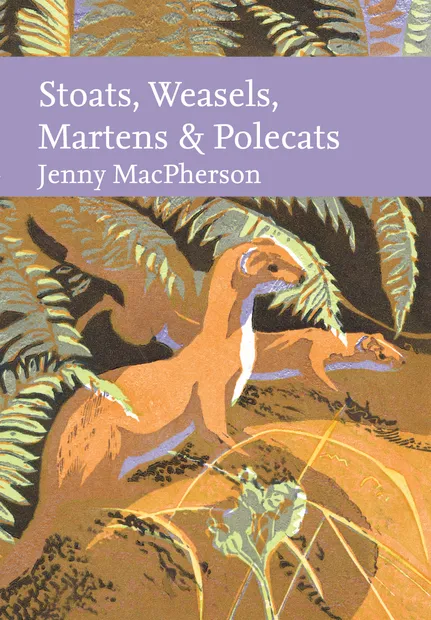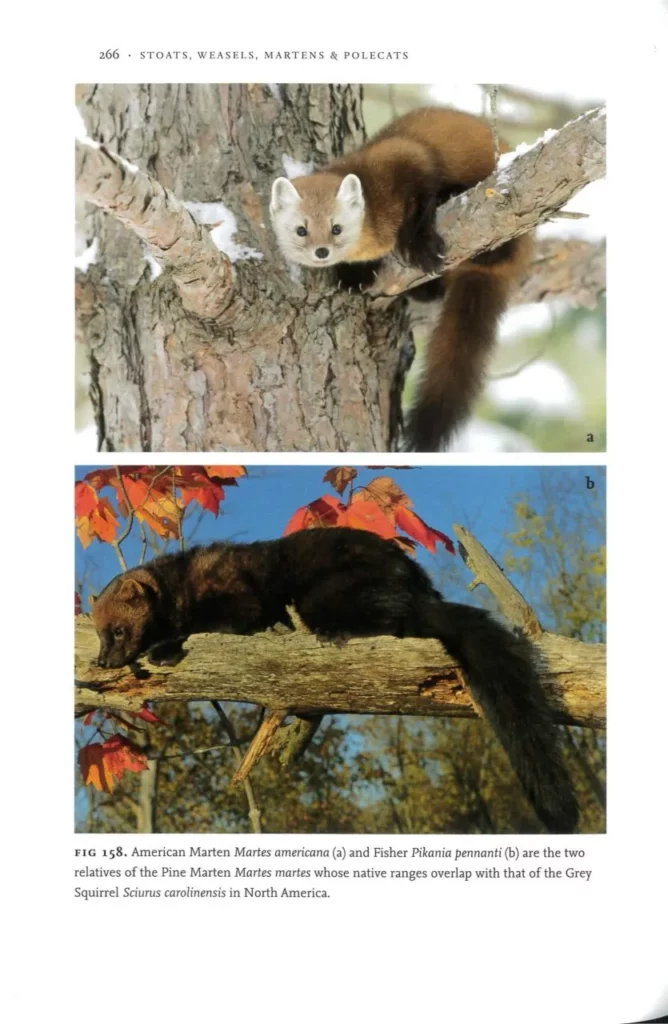Stoats, Weasels, Martens & Polecats
Jenny MacPherson

Those lucky enough to have had an encounter with a wild mustelid will be well aware of their ability to charm and fascinate us. In her new book from the Collins New Naturalist library, Stoats, Weasels, Martens & Polecats, Dr Jenny MacPherson brings her considerable knowledge and professional experience with these incredible animals to light. MacPherson has worked with many species during her career, including Pine Martens, Hazel Dormice, Red Squirrels, Water Voles and Mink. In this book, she delves into the lives of the small mustelids. They are a highly secretive and elusive group of mammals, which is one of the reasons this new book is so appealing. In her current role as the Principal Scientist at the Vincent Wildlife Trust, MacPherson managed the Pine Marten Recovery Project for England and Wales. She is now considered one of the leading experts in this field. Projects like these have a huge, positive impact on the future survival of our Pine Marten population.
As the title suggests the book provides a comprehensive natural history of Stoats, Weasels, Pine Martens and Polecats. The secretive lives of these intriguing, often hidden mammals are revealed in great detail providing a research-based, fact packed look into all aspects of one of our most charismatic animal groups. Written with an impressive depth of knowledge this book is a must for all nature lovers.
At its core, the book offers a detailed insight into the biology and ecology of the small mustelids, starting with their origins and taxonomy. The author explains their evolution and the unique morphology that has made these animals the successful predators they are today. The book lays out the fascinating adaptations and morphological differences between these species and how competition for resources and territory has shaped their behaviour. Dr MacPherson also addresses their complex breeding strategies, including delayed implantation, and how these strategies have been crucial to their survival. The author covers the latest research on the interactions between Pine Martens and the invasive Grey Squirrel and how this is impacting our native Red Squirrel populations. She describes how increasing Pine Marten numbers might be changing the ecological landscape and helping aid the Red Squirrel’s return to our woodlands. The book reveals the subtleties of mustelid behaviour, such as their hunting tactics, dietary requirements, longevity and foraging habits; the strategies they have developed that make them highly effective predators; and how they hunt and adapt their behaviour to different environments and prey species. It also covers predator-prey population dynamics, giving readers a better understanding of how prey numbers can impact the mustelids’ lives and survival.
As well as biology and ecology, this book also covers the long and complex relationship between us humans and these small predators, including their long history of persecution and population decline at our hands, covering the fur trade, Vermin Acts and gamekeeping with its widespread culling and eradication efforts. The book then moves to more recent times and our changing attitudes, providing a hopeful and inspiring look at changes in legislation and ongoing conservation efforts. The author takes the reader through the history and success of recent Pine Marten reintroduction programmes, a species that was once nearly extinct in the wild in Britain. MacPherson uses first-hand experience to give a detailed account of the processes, the challenges and solutions involved in such a project. The book then explores the use of telemetry and GPS tracking to monitor the introduced animals in their new home, revealing what the individuals get up to after their release. For me, one of the most striking revelations in the book is how a Pine Marten released in Wales found its way to America! The book is worth buying for this incredible story alone. Stoats, Weasels, Martens & Polecats is cleverly written in that it is rich in technical detail yet highly readable and accessible to all. The language is clear and engaging, making it enjoyable for both casual nature enthusiasts and those with a more advanced understanding of ecology and conservation.
In addition to its rich scientific content, the book also explores the cultural impact and mythology surrounding the small mustelids. MacPherson explains the cultural associations of these animals by detailing their appearances in folklore and the significance of their representations in artwork. The author explains how and why Stoats, Weasels, Pine Martens and Polecats have long held certain symbolic meanings and how our relationship with them has changed over the centuries.
In conclusion, whether you are an experienced ecologist or simply someone fascinated by the secretive lives of our wildlife, you will thoroughly enjoy this book. It will provide you with a deeper appreciation of the lives, biology and ecology of the small mustelids. The book is beautifully written, thoroughly researched and crammed with information. Lavishly illustrated throughout, it is the ideal book to read if you want to bring the elusive world of our small mustelids to life. A great piece of nature literature that will linger in my mind for many years to come: I highly recommend it.
Reviewed by Dan Bagur, author of Pine Marten: The Secret Life of Martes Martes (Pelagic Monographs).

